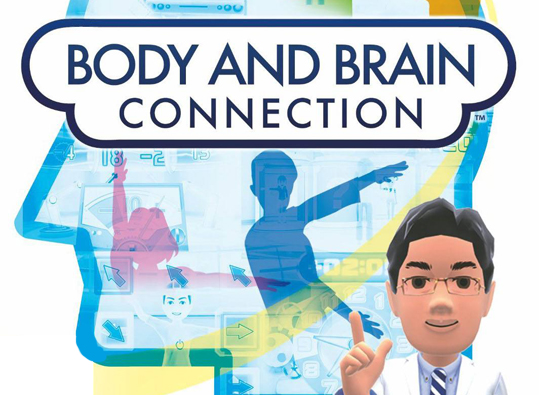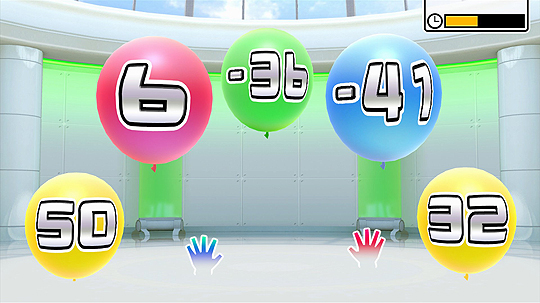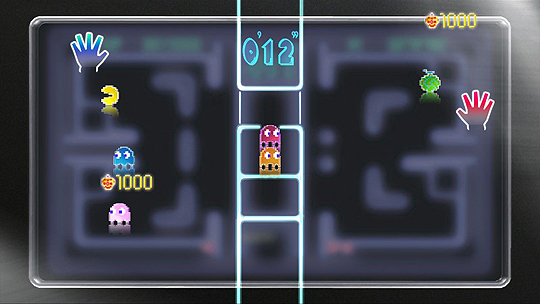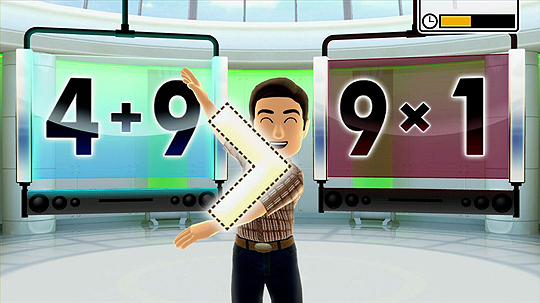
Brain and Body Connection should be called "Brain Age: Xbox 360 Edition." The game is a Brain Age game, and I don’t even mean that as a sarcastic joke. The game is hosted and conceptualized by Dr. Ryuta Kawashima, the same Dr. Ryuta Kawashima who was behind Brain Age and Brain Age 2. And guess how you start the game? That’s right, by figuring out your brain age. Like I said, this is Brain Age in everything but the name.
There really is very little to separate this game from the Nintendo title, but that is okay, because like the Brain Age games, Body and Brain Connection is a fairly fun title that takes advantage of the local technology in interesting ways. Best of all, whether or not the results are substantial and measurable, you at least feel like you are doing something for your brain, and that is a claim video games can’t often make to the general public. We as gaming insiders know that it takes a hell of a lot more brain power to figure out the water temple in Ocarina of Time than it does to read a book, but the anti-video game masses will never understand why. If we can show them this, we might have some ammo to dispense.
There is no reason to disguise that fact that Brain and Body Connection is a series of minigames. It’s the type of the game that proliferated the Wii after launch, and now it’s here to take advantage of the Kinect technologies. You begin the game by conducting a few short tests to decide your brain age, and from there, you are given a couple of short minigames to to make your brain do some mind pushups. The idea here is to log a short amount of time in Brain and Body Connection every day by playing a couple of preselected minigames in order to make your brain age younger and more virile. If you simply cannot get enough of the small offering, then you are welcome to check out the full list to see everything the game has to offer.

The minigames are broken up into five groups: Math, Reflexes, Logic, Memory and Physical. Each section has four games that fit into the descriptive name. Math games involve math, Reflex games involve reacting quickly, and so on and so forth. You don’t need to have a brain age of 23 to figure out what sort of games fall into what category. The game tracks your progress via your brain age, and allows players to unlock harder versions of the games as they progress.
All of the games involve limited amounts of movement, and rely more on good puzzle solving or quick math skills. You will have to do things like catch pizzas, pop numbered balloons, memorize patterns, and direct traffic by creating bridges. All of the games are responsive to the Kinect controls, and I rarely ran into problems. This is because the game keeps the movements simple and easy to translate, and it works well for the selection of games offered here. One game even stars Namco mascots Pac-Man, the ghosts, and Pooka from Dig Dug. Their appearance is limited to one game, but their cameo appearance is certainly welcome.

There are a lot of puzzle games out there designed to make you feel smart, but there aren’t many designed to make you smarter. This is what Brain and Body Connection wants to do, and in the process, it will often make you feel incredibly stupid. The games themselves require a quick mind, but the real reason I felt so dumb from Brain and Body Connection was the feedback from Dr. Kawashima. Playing by myself, I don’t believe a ever received a positive word of encouragment from the doctor, and during multiplayer, my wife and I played so poorly that he decided that nobody won. For a doctor, he has a terrible bedside manner.
Speaking of multiplayer, it does exist. You can play with up to four people at a time making your way through the offering of minigames. Some games are played together, and some are played separately. At the end of the game a winner is decided (or not) and embarrassing titles are offered to the players. After that, photos from the games are shared, and you are given the opportunity to have a group photo taken by the doctor himself. My wife and I, after receiving our titles, proudly extended our middle fingers towards Dr. Kawashima, and smiled for our photo.

There are quite a few aspects of the interface that Brain and Body Connection handles quite well. To sift through menus, the Kinect is always aware of your hand, and places a cursor of it on screen, but will not accept it as input until the user pushes their arm toward the screen. This helps to avoid false selections. The game also takes your picture automatically when you walk into frame and places your face next to your avatar. This was a surprise, and made it easy in multiplayer to figure out who was who. I also enjoyed the dancing light bulb loading screen quite a bit.
I don’t know if calculating your brain age and exercising your brain will actually lead to sharper wit or a higher SAT score, but it’s undeniable that is certainly couldn’t hurt. The game does little to reward the player, but it can be fun. Some of the games shine stronger than others, and it takes full advantage of the Kinect technology without demanding too much of the player. You won’t get frustrated by interacting with the camera, only by the games on screen, and that is a pretty big step in the world of Kinect. I only wish Dr. Kawashima was a little bit more encouraging.


















